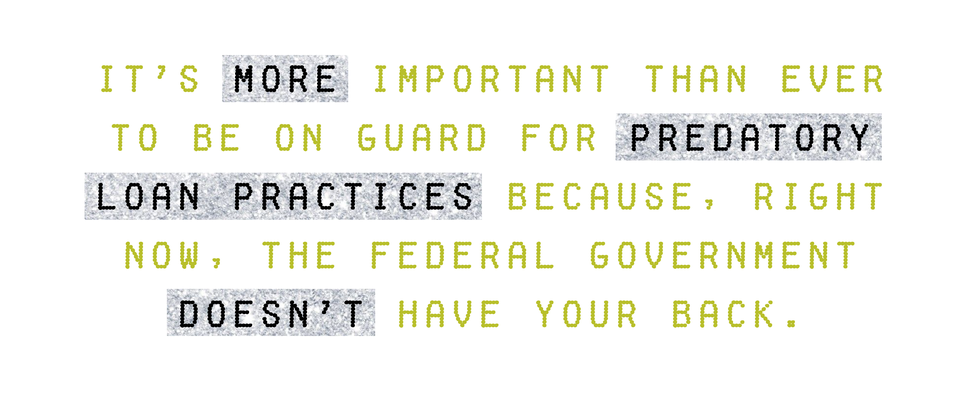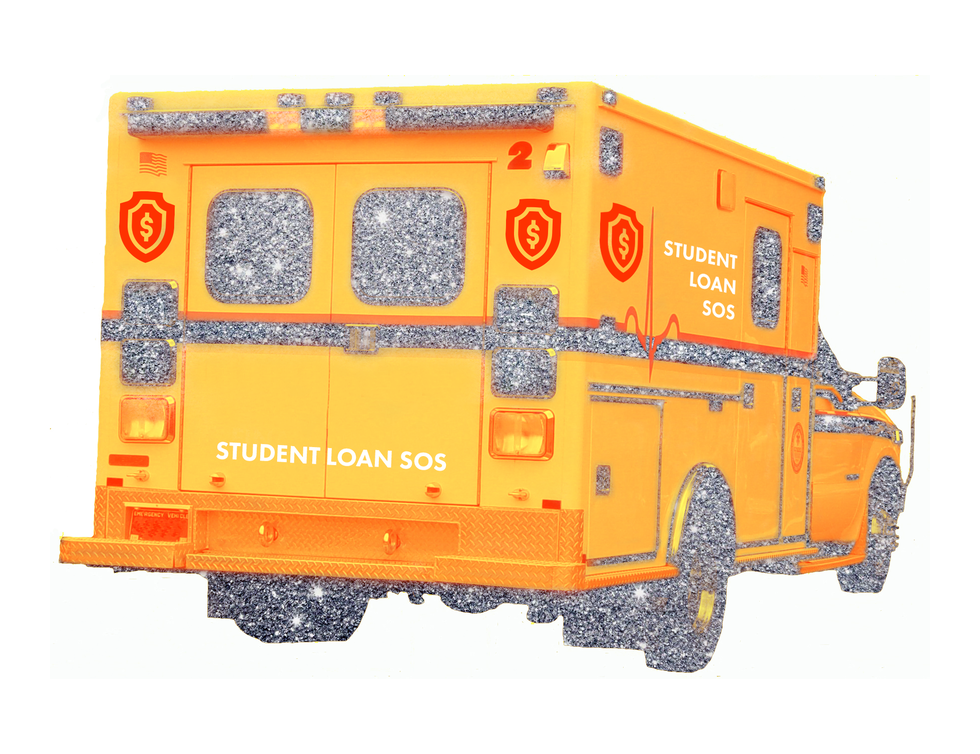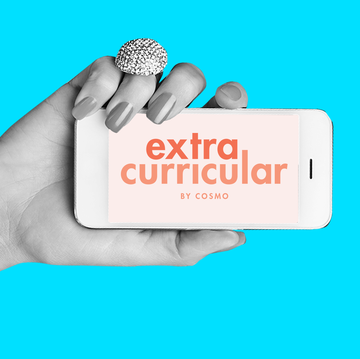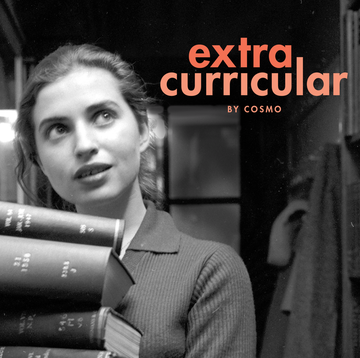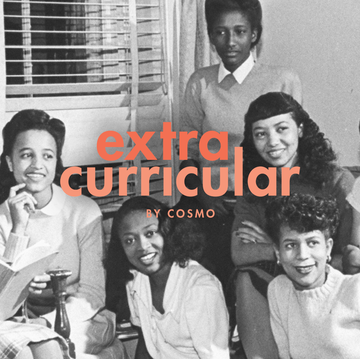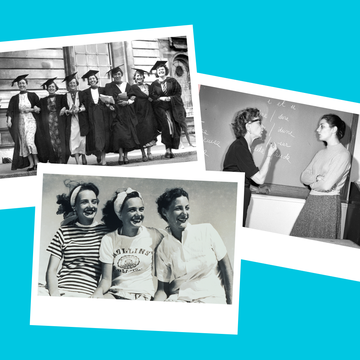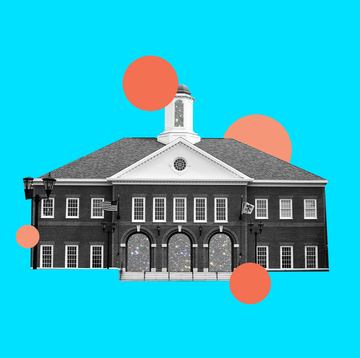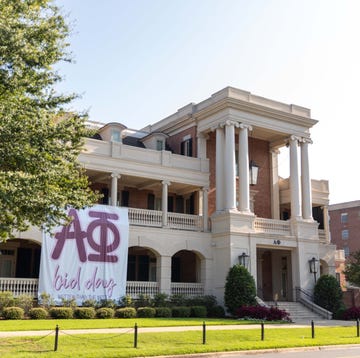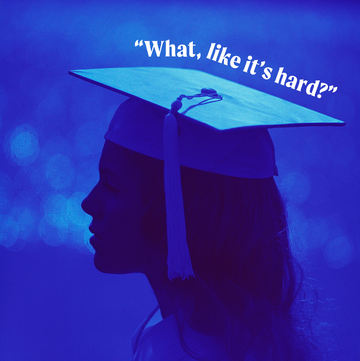Last year, New York senator and former presidential candidate Kirsten Gillibrand made an announcement to college students nationwide: It’s more important than ever to be on guard for predatory loan practices because, right now, the federal government does not have your back.
Also last year, the Consumer Financial Protection Bureau closed its Office of Students and Young Consumers, the department that once worked to protect student borrowers from lending scams and abuses.
Here are four offenses you can watch out for yourself, from outright scams to dubious behavior.
A loan that charges unexplained fees or has an unfixed interest rate
Private loans are a murky world—most come with high interest rates and rigid penalties for defaulting. If you have to take them on, here are a few things that should never, ever happen: Fees, costs, or services beyond principal and interest are red flags, says Jill Rayner, director of financial aid at the University of Georgia. Also, watch out for interest rates that are billed as “unfixed” or “variable,” which means the lender can entice you with a low interest rate and then suddenly double or triple it.
A for-profit college that’s promising too much and pushing too hard (which is basically all of them)
There are a million reasons to steer clear of schools that advertise on daytime TV. Students at for-profit colleges hold a disproportionate amount of the country’s loan debt—and five years out of school, nearly half of students who took out loans to attend a for-profit college were struggling to pay the money back, according to Department of Education data from 2015 and 2016. Corinthian Colleges Inc., which ran for-profit institutions Everest, Heald, and Wyotech, closed its schools in 2015 after being sued by the attorney general of California for “predatory and unlawful practices [that misrepresented] job placement rates and school programs [that] targeted low-income, vulnerable individuals and left tens of thousands of students under a mountain of debt unable to find a job.” Other for-profit schools have also abruptly shut down, leaving thousands of students in debt without degrees. Lesson: If it sounds too good to be true, it probably is.
A campus debit card that charges you fees—while enriching your college
Want to hear something terrifying? A recent study by the U.S. Public Interest Research Group (PIRG) found that banks pay universities to market checking accounts with high fees to students, kicking them money for every student who signs up. At least 1.1 million students have been taken advantage of due to this practice.
Here’s how it works: Students who don’t have checking accounts need to open them in order to receive their financial aid funds. Under the guise of making this a smooth process, universities suggest you bank with the financial institution of their choice. Then that bank will set you up with a campus debit card.
But there’s a catch. The Consumer Financial Protection Bureau’s guidelines indicate that these campus debit cards should not have out-of-network ATM or overdraft fees. Yet many of the banks that work with universities do. “We’ve seen plenty of students who have accrued hundreds of dollars in fees,” says Kaitlyn Vitez, higher education campaign director at PIRG, who coauthored this study. “I know one student racked up several hundred dollars’ worth of fees during his first year with a card that this school told him was safe and affordable. That set him on a path where he owes more than $600. He was set up for failure as a first-year.”
To avoid this situation, “proceed with caution with any bank that’s recommended by your school, particularly if it’s Wells Fargo, PNC, or U.S. Bank,” says Vitez. “Those are the three largest banks that have marketing agreements with schools.”
A promise of “loan forgiveness”
The Public Service Loan Forgiveness (PSLF) program, which launched in 2007, pledged something remarkable: Put in 10 years working for a public school, nonprofit service organization, or the military and you could apply to have your debt erased. But as of March, more than 73,000 people have applied for debt forgiveness, according to Education Department data, but just 864—or 1.2 percent—have had their loans erased. This is because there’s lots of misconceptions about PSLF, says Mark Kantrowitz, publisher and VP of research at SavingForCollege.com. “The program is complicated because it has a lot of details that people often overlook—like the fact that all your loans have to be in income-based repayment plans or that you have to make 120 individual payments over 10 years or that working for a contractor who works for the government does not mean you actually work for the government.” Plus, the lenders involved are under fire for misleading borrowers, meaning many people who have spent 10 years making payments they thought would count toward forgiveness are now starting at square one. If you’re signing on to college with the idea that you’re going to take advantage of this program one day, check out SavingForCollege.com’s checklist to decide if you can meet all the hyper-specific requirements.

Jessica Goodman is the New York Times bestselling author of young adult thrillers They Wish they Were Us, They’ll Never Catch Us, and The Counselors. She is the former op-ed editor at Cosmopolitan magazine, and was part of the 2017 team that won a National Magazine Award in personal service. She has also held editorial positions at Entertainment Weekly and HuffPost, and her work has been published in outlets like Glamour, Condé Nast Traveler, Elle, and Marie Claire.

